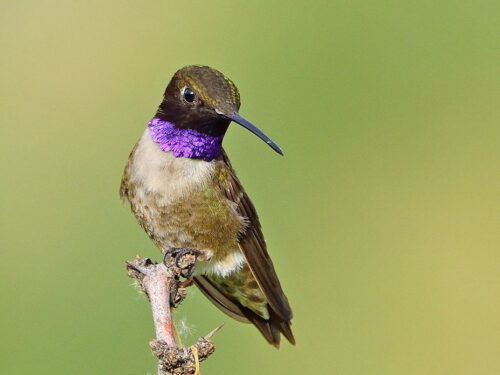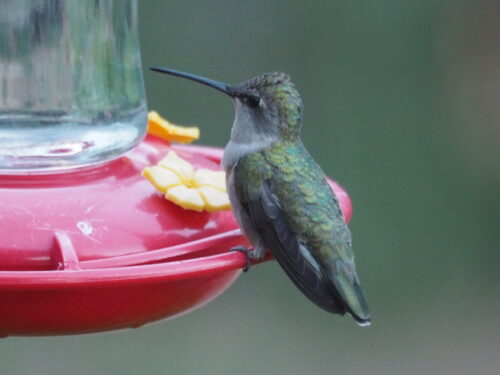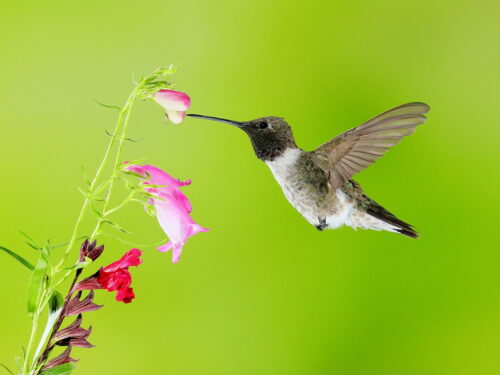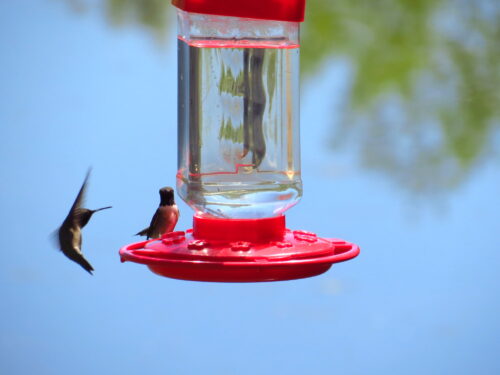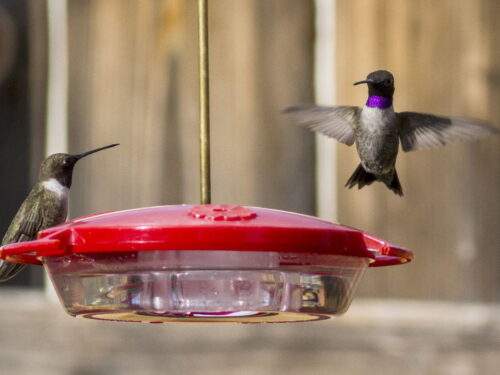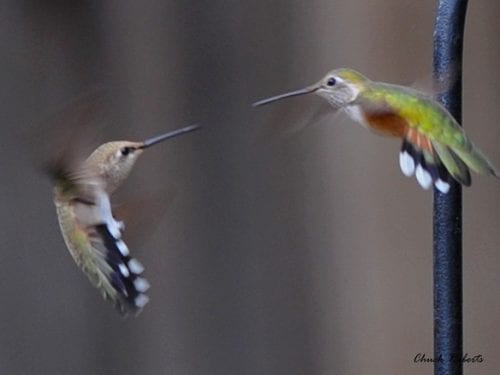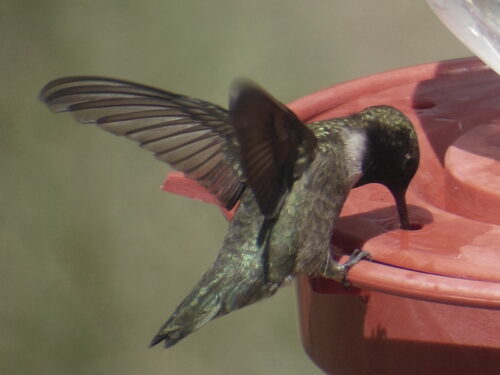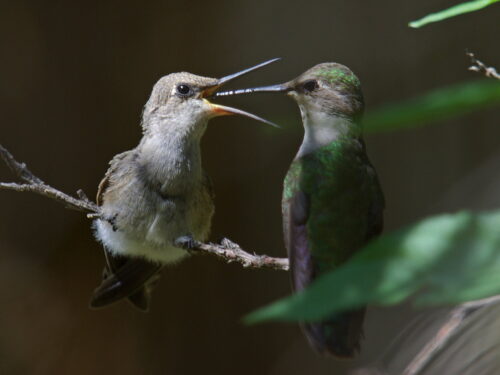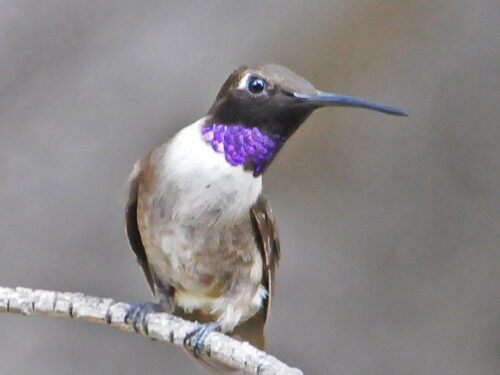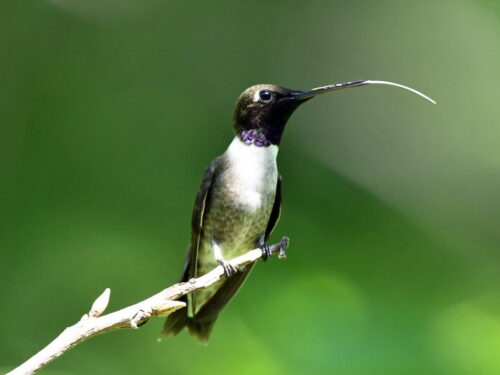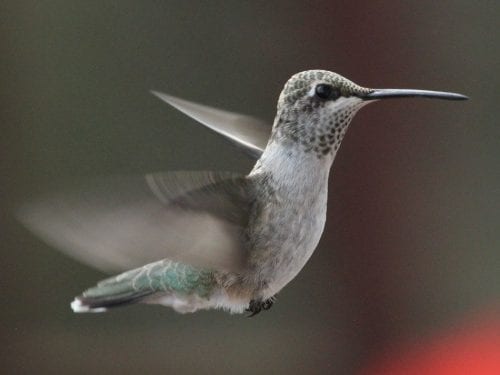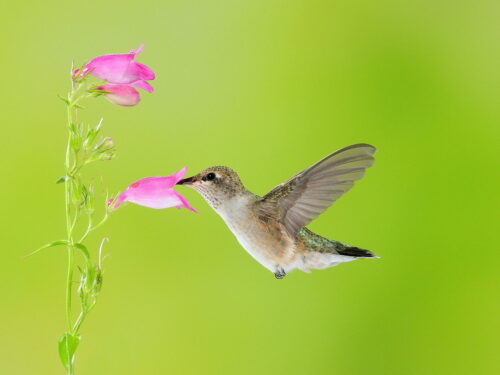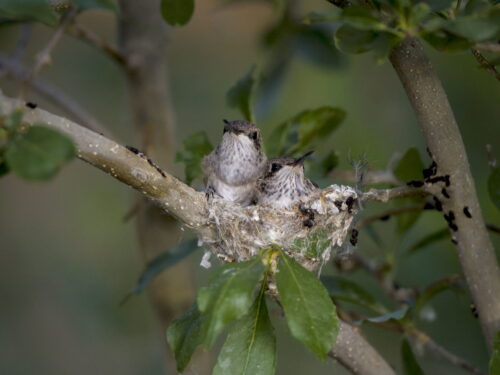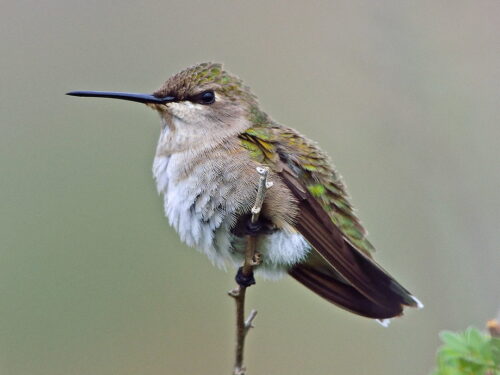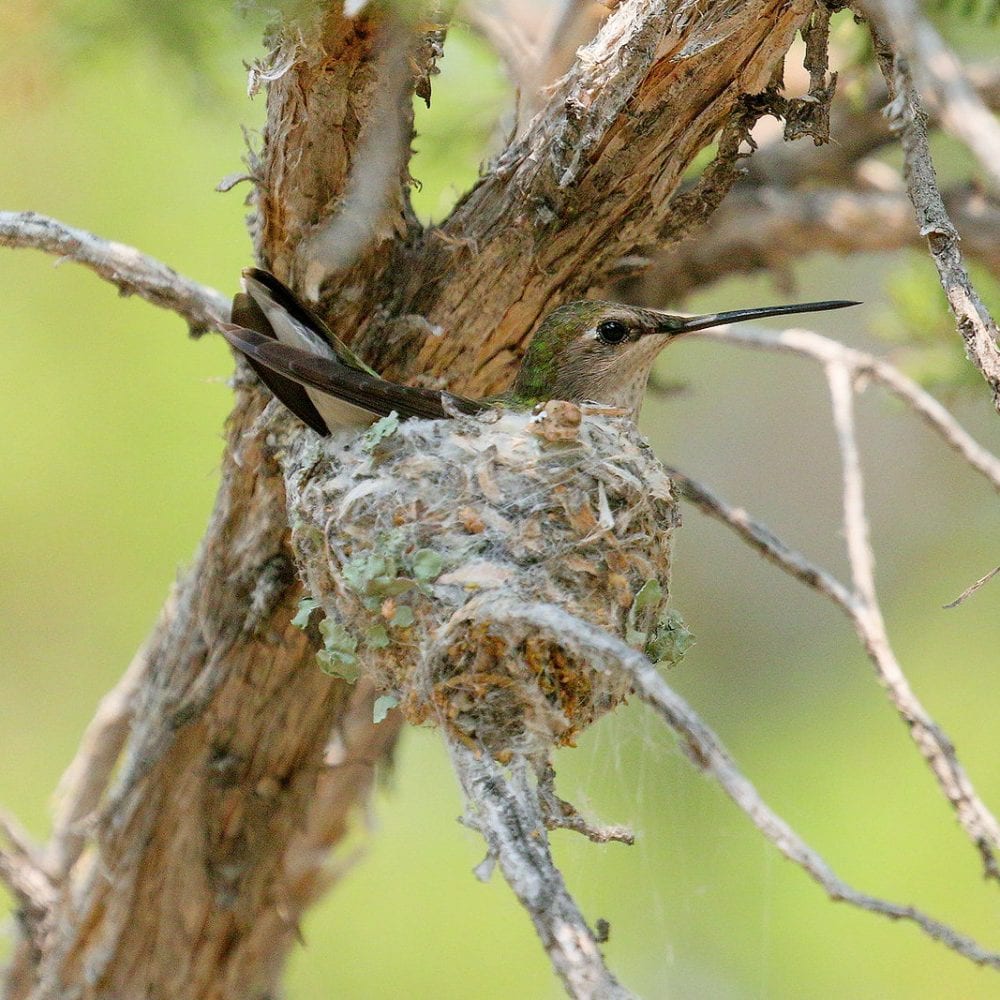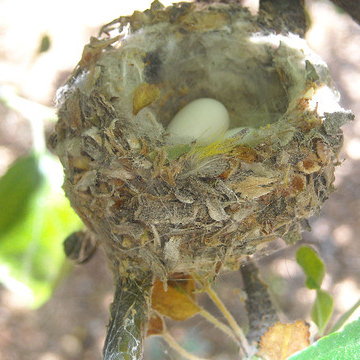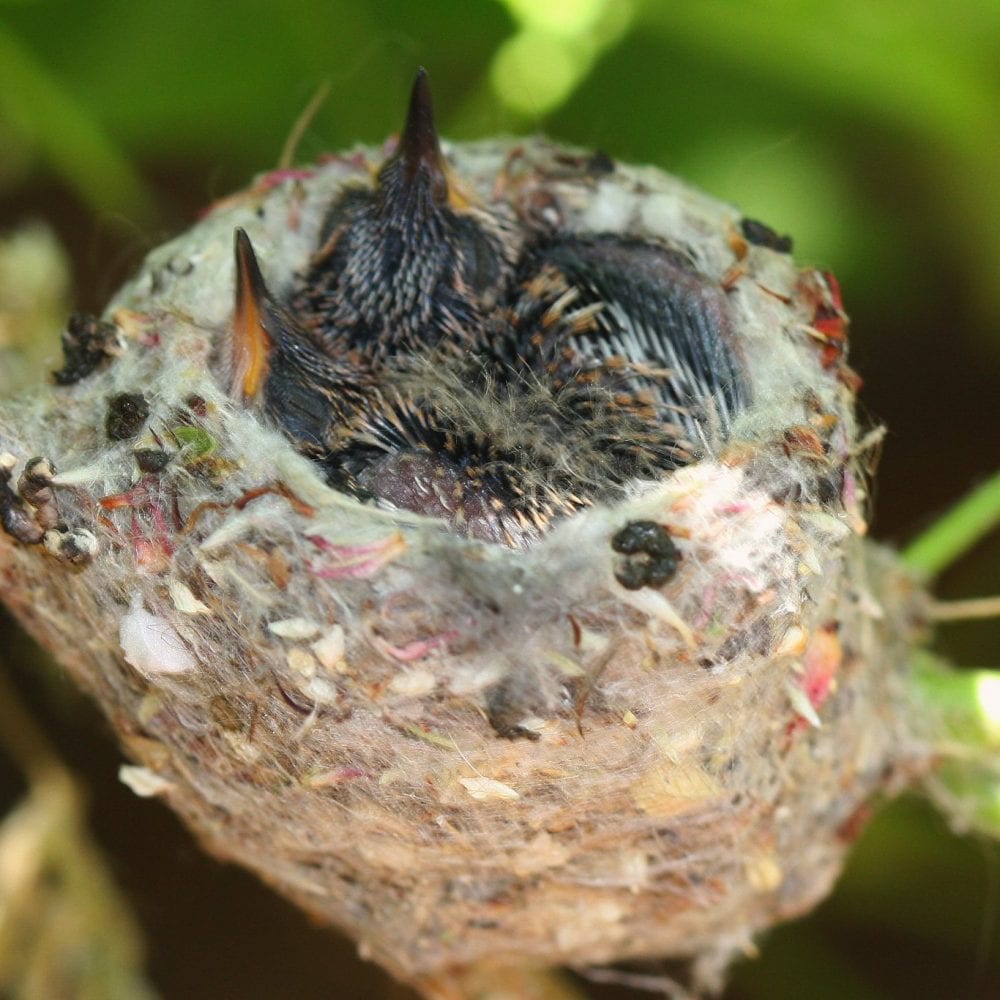Black-chinned Hummingbird
Scientific Name: Archilochus alexandri
Type: Bird
Family: Trochilidae (Hummingbirds)
Size: 3.5 inches long; 4.3-inch wingspan
Weight: 0.1 to 0.2 ounces
Life Span:up to 10 years

Physical Description
A Black-chinned Hummingbird is dull green above and grayish-white below. These birds have smaller heads than many other hummingbirds as well as a thinner neck and more slender body. They have long, black bills and broad, curved wingtips. In addition, there is a white spot behind each eye.
Adult males have a throat patch called a gorget that is primarily black with a thin, iridescent purple base that gleams like a jewel when it raises its head toward the sun at just the right angle. In contrast, females have a white throat that may show some faint streaking. Juveniles resemble the females with males only fully developing the gorget feathers as they mature.
Male in Sun
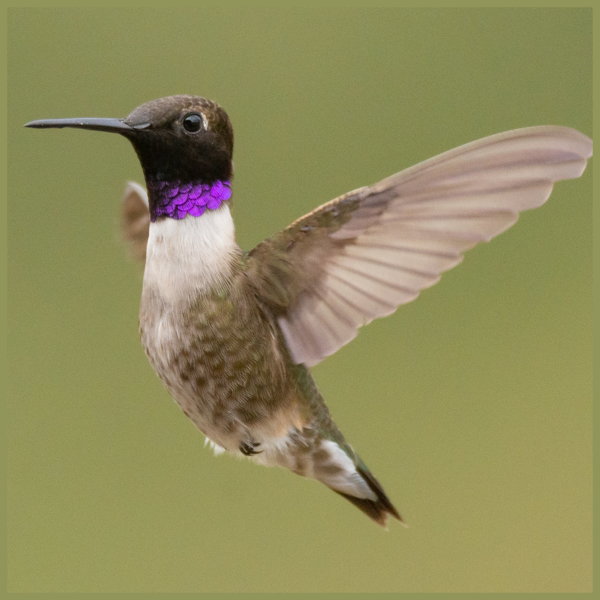
Male Looking Away
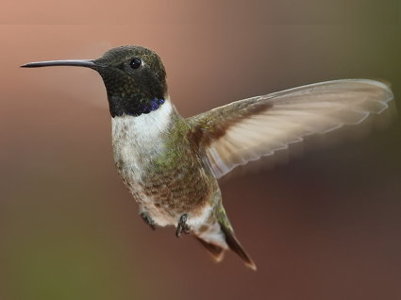
Female
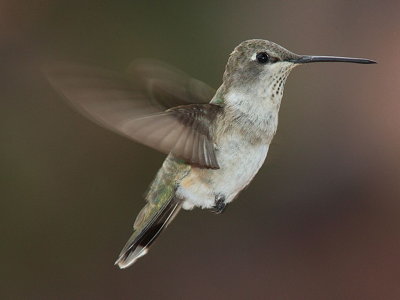
Immature Male
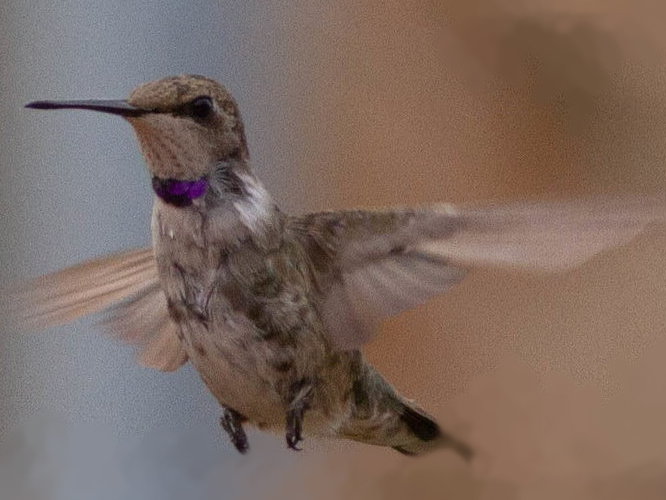
Range, Migration, and Habitat
Black-chinned Hummingbirds tend to spend their winters in Mexico along the coast. Come spring, they migrate northward to breed in the western US from as far north as Washington through New Mexico to Texas. Black-chinned hummingbirds do not migrate in flocks, they typically travel alone.
A Black-chinned Hummingbird’s preferred habitats include mountain and alpine meadows, woodlands, canyons with thickets, chaparral, and orchards. They are also common visitors of suburban gardens and will nest in adjacent back yards as long as there are tall trees and shrubs.
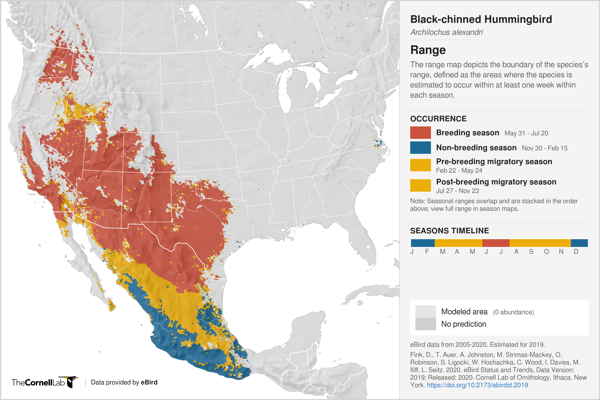
Diet
Black-chinned hummingbirds feed primarily on nectar and a wide variety of tiny insects. They are also attracted to sugar-water mixtures in hummingbird feeders.
These birds will feed from a number of different flowers, using their long tongues to reach the nectar within. They favor tube-like flowers. In addition, their diet includes insects caught in mid-air or plucked off of foliage. The protein in these insects is particularly important for feeding young chicks.
Behavior and Social Life
Black-chinned Hummingbirds are most often observed zipping around during the day, going from flower to flower or feeder, hovering above and drinking nectar. Like other hummingbirds, a Black-chinned Hummingbird possesses a specially designed tongue with two grooves. Nectar moves up through the groove and is squeezed into the bird’s mouth when the tongue is retracted.
Alternatively, these birds may be seen darting erratically while catching flying insects or perching somewhere picking off climbing insects.
Black-chinned Hummingbirds are territorial. They will perch on a high branch surveying their territory. If a competitor is spotted, they will make a loud raspy sound and physically chase the intruder away.
On cold nights, Black-chinned Hummingbirds enter a state of torpor with slowed metabolism. In torpor, these birds breathe sporadically but are able to maintain a body temperature of around 54° F even when the ambient temperature is 10 degrees or more lower.
Foraging
Females Arguing
Male Vocalizing While Flying
Life Cycle
During courtship, male Black-chinned Hummingbirds perform a dramatic dance for the females. They fly in a U-shaped pattern, diving down from up to 100 feet above the ground. The dive produces a loud wing buzz. Males will mate with several different females and do not take no part in nest building, incubation, or rearing of young.
Females build a cup-shaped nest on a horizontal branch that is sheltered from above. The nest is made of spider webs and plant down from the underside of leaves and is covered with lichen, moss, and bits of bark.
Black-chinned Hummingbird eggs are white and elliptical shaped. Typically, there are two eggs laid and incubation is from 2 to 3 weeks. The young birds fledge at about 3 weeks of age.
Title
Ecological Role
Black-chinned Hummingbirds are important pollinators and have a mutually beneficial relationship with a number of plants on which they forage. These plants include desert honeysuckle, larkspur, and thistle.
Several different species of birds are considered to be predators of both hummingbird nests and adult birds such as roadrunners, jays, orioles, and tanagers.
Interactions With Humans
Hummingbirds, including Black-chinned Hummingbirds, are attracted to feeders providing a popular way for individuals to bird watch.
Interesting Facts
- The Black-chinned Hummingbird is one of the most adaptable, living in urban areas as well as natural settings.
- In cold weather, a Black-chinned Hummingbird may eat three times its body weight in nectar in one day.
- Nests may be found every 300 feet or so in some stretches of southern Arizona and New Mexico along rivers.
- During migration, individuals rarely remain longer than one day at a feeder even when food is scarce.
- Black-chinned Hummingbirds choose their nest material so that the nest can expand as their babies grow.
- Black-chinned Hummingbird eggs are the size of a coffee bean.
- Females are larger on average than males and young birds are larger than their parents.
- A Black-chinned Hummingbird flicks out its tongue at a rate of about 15 licks per second.
- A Black-chinned Hummingbird can consume about a fifth of an ounce of nectar in a single meal.
- As long as insects are plentiful, these birds can survive without nectar.
- At rest, the hummingbird heart beats an average of 480 beats per minute.
- Black-chinned Hummingbirds, unlike some other hummingbirds, are not drawn so much to red, as to the color of flowers of recent nectar finds.

